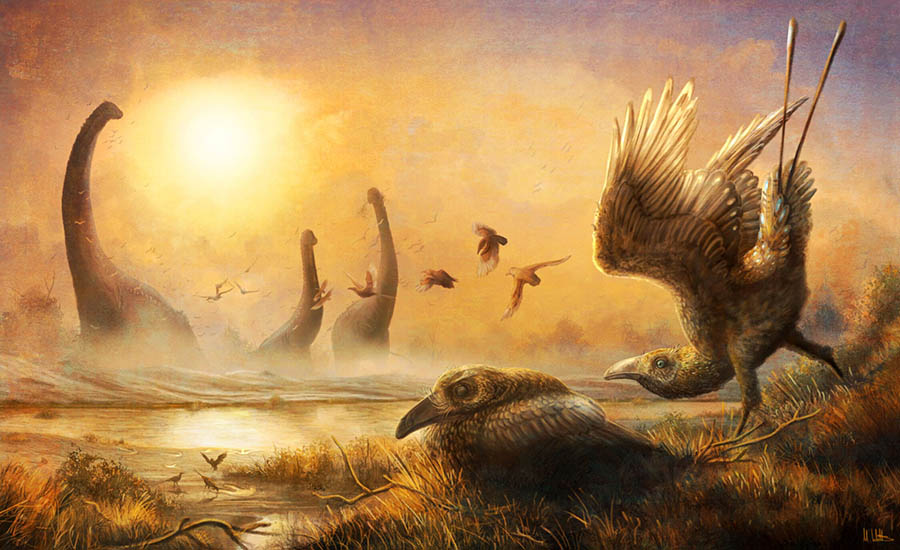Falcatakely forsterae: Cretaceous-Period Bird from Madagascar Had Sickle-Shaped Beak

Paleontologists in Madagascar have identified a new genus and species of enantiornithine bird that had a long and deep beak, a morphology that was previously unknown among Mesozoic birds.
The newly-identified bird species lived between 70 and 68 million years ago (Late Cretaceous epoch) in what is now Madagascar.
Named Falcatakely forsterae, it belongs to Enantiornithines, an extinct group of birds known exclusively from the Cretaceous and predominantly from fossils discovered in Asia.
“Enantiornithines represent the first great diversification of early birds, occupying ecosystems alongside their non-avian relatives such as Velociraptor and Tyrannosaurus,” said Dr. Alan Turner, a researcher in the Department of Anatomical Sciences at Stony Brook University.
“Unlike the first birds, such as Archaeopteryx, with long tails and primitive features in the skull, enantiornithines like Falcatakely forsterae would have looked relatively modern.”

Falcatakely forsterae was small, about the size of a crow, and had a sickle-shaped beak.
“We don’t really know why certain beak shapes evolve, but we do know they are used for a multitude of functions such as object manipulation, feather grooming, feeding, and other life-sustaining behaviors,” Dr. Turner said.
“In the case of Falcatakely forsterae, that was probably the same and it is significant to discover that this early bird during the Cretaceous had such a uniquely evolved beak.”
Falcatakely forsterae is known from a well-preserved partial skull found in northwestern Madagascar.
“The exquisite quality of preservation is outstanding and reveals many important details,” the paleontologists said.
“As one example, a complex series of grooves on the external surface of bones making up the side of the face indicate that the animal hosted an expansive keratinous covering, or beak, in life.”

Using high-resolution micro-computed tomography and digital modeling, they virtually dissected individual bones from the rock.
“It was quickly apparent that bones making up the face in Falcatakely forsterae are organized quite unlike those of any dinosaur, avian or non-avian, despite having a face superficially similar to a number of modern bird groups alive today,” they said.
“All living birds build the skeleton of their beaks in a very specific way. It’s mostly formed by a single enlarged bone call the premaxilla.”
“In constrast, most birds from the age of dinosaurs, like the iconic Archaeopteryx, have relatively unspecialized snouts comprised of a small premaxilla and a large maxilla.”
“Surprisingly, in Falcatakely forsterae we found this similar primitive arrangement of bones but with an overall face shape reminiscent of certain modern birds with a high, long upper bill and completely unlike anything known in the Mesozoic.”
“It turns out you can make a modern looking beak in multiple ways,” Dr. Turner said.
“The developmental basis for the skeleton of modern beaks didn’t need to be there for a ‘modern’ looking beak to evolve.”
The discovery is described in a paper in the journal Nature.
_____
P.M. O’Connor et al. Late Cretaceous bird from Madagascar reveals unique development of beaks. Nature, published online November 25, 2020; doi: 10.1038/s41586-020-2945-x
Source: www.sci-news.com/








